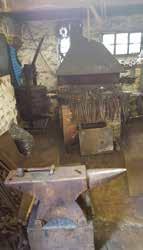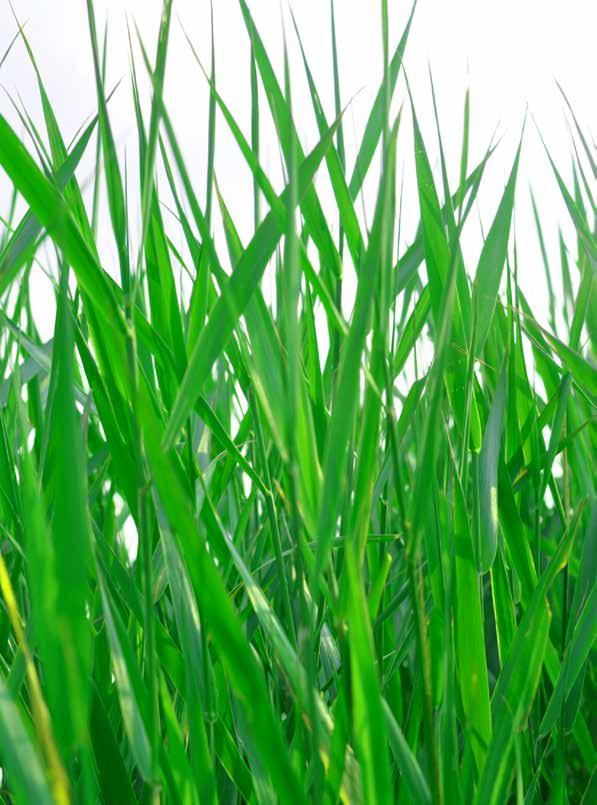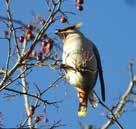
















Ah, Mother’s Day – or as it was more traditionally known, Mothering Sunday, the one day of the year we are all supposed to thank the women who gave life to us and the ones who raised us (they aren’t always the same people).
But did you know that the UK Mothering Sunday probably has very little to do with honouring our birth mums and carers?
Although the facts are murky (thanks Wikipedia for all the conflicting accounts!) it appears that the day is connected more closely to Christianity than to showing our mum how much we love her.
You see, in the UK, Mothering Sunday is not a fixed day as it is in the US, instead it is linked to Lent, the Christian period of abstinence preceding Easter. And as we all know, Easter, and therefore Lent, is a moveable feast (or nonfeast in the case of Lent!). Mothering Sunday always falls on the fourth Sunday in Lent (Laetare Sunday), three weeks before Easter Sunday – this year, that means March 10th.
If you try to search the history of Mothering Sunday, you will find claims it was initially linked to The Feast of Annunciation, a day devised to celebrate the Virgin Mary – Mother Mary, and held each year on March 25th. I read, “it is no coincidence that over time, March 25th, or the nearest Sunday, became a celebration of all motherhood.”
I’m not altogether sure I believe this…
The alternative view is that by the 16th century people were moving away from the areas in which they had been born, and therefore
baptised, but would return once a year around Lent to visit their “Mother Church”.
Another tradition dating back to the same time is those working in the fields, farms, and grand houses of wealthy landowners would be given the day off on the fourth Sunday of Lent to visit their mothers and possibly go to church. With no cars, buses, or railways, that may have been a difficult task, and it certainly marked a move towards the more family focused Mother’s Day we celebrate today.
Whatever the origins, Mother’s Day should not be the only day we give extra love and attention to all the mothers in our lives. I would rather see my grown-up children regularly bearing no gifts than have them turn up once a year with a bunch of flowers and a box of chocolates! The hype surrounding this one day helps those who don’t really care about family tick a box on their social conscience calendar…”card and flowers for mum” – tick.
Buy a card, make a card (us mums will always remember the ones made by little hands at school more than the ostentatious shop bought ones), give flowers, give chocolate and cakes…but most of all, give love and thanks to the person who carried you inside them for nine long months…and don’t just do that once a year!









HAVE YOU SEEN THIS PICTURE BEFORE? DO YOU PRAY?
THIS IS JESUS KNOCKING ON THE DOOR OF YOUR HEART.
THE HANDLE IS ON THE INSIDE - ONLY YOU CAN LET HIM IN. Lots of people pray, but praying can be like talking through a door. You know He’s in there somewhere, but you don’t know Him personally.

Visualise wearing a back pack.
If you fill it with all your sins, would it be heavy?
That represents your debt to God.
It stops us having a relationship with Him.
If you owed the bank a Million Pounds and I gave you a cheque for that amount and you gave it to the bank - what would happen to your debt? (Cancelled Out)
That’s what Jesus did for you when He died on the cross. He wrote a cheque signed in His blood - which cancelled out your debt.
Today - He’s standing at the door of your heart waiting for you to cash in your cheque so you will be debt free.
If Jesus were here right now, would you let Him in?
If you do want to know Jesus - pray this prayer.
Jesus, forgive me for my sins. I open the door of my heart. I ask You to be Lord of my life. Fill me with your spirit. Amen.



Well known for personal & honest service
Large selection of carpets & other floor coverings
Measuring service & professional fitting available Call in at the shop or phone us for a free home selection service
Method:
1. Preheat your oven to 200°C/ fan 180°C/gas 6.
2. Put the vinegar, paprika, garlic, Worcestershire sauce and chopped tomatoes in a large, shallow, flameproof casserole dish. Put it over a medium-high heat, bring to a simmer and cook for 20 minutes, stirring occasionally. Season to taste.
3. At the same time, gently bash the bacon medallions to flatten them out and lengthen slightly. Stretch a piece of bacon over each chicken breast.

This pub grub classic has the slimming World twist, which means it is super healthy, filling and bang on plan. Enjoy!
4. Nestle the chicken breasts into the sauce and spoon a little sauce over the top. Divide the mozzarella over the chicken breasts and bake in the oven for 20 minutes, or until the chicken is cooked through.
5. When the chicken’s almost ready, steam or boil the green beans for 3-4 minutes, then drain. Scatter the parsley over the chicken, then divide the chicken and sauce between 4 plates, and serve with the beans and baked potatoes.
Serves: 4
Ingredients:
• 1½ tbsp red wine vinegar
• 1½ tsp sweet or hot smoked paprika
• 1½ tsp garlic granules
• 2 tbsp Worcestershire sauce
• 2 x 400g cans chopped tomatoes
• 4 smoked bacon medallions, visible fat removed
• 4 skinless and boneless chicken breasts
• 200g grated mozzarella
• 400g green beans, trimmed
• ½ small pack fresh parsley, chopped, to serve
• 4 microwaved or oven-cooked baking potatoes, to serve
Ready in: 50 minutes

Syns per serving: 6







✽ 2 spacious en-suite bedrooms
✽ A fully enclosed garden
✽ 2 small to medium dogs welcome (3 upon request)
✽ Fully equipped kitchen, including an American style fridge freezer


✽ Perfect for exploring the stunning Northumbrian Heritage Coastline
✽ Close to a range of dog friendly pubs, cafes and restaurants in stunning Warkworth
✽ We have fast fibre Wi-Fi and smart TV’s Search ‘The Little Red Hen House’ at:


Treat yourself to a luxury break at the 4* Gold Award winning Little Red Hen House. An elegant and cosy holiday home just a 7 minute drive from award-winning and dog-friendly Warkworth beach. www.coquetcottages.co.uk







Supply
Supply
Supply
Supply
































The Grace Year by Kim Liggett is a fast and furious read. It’s a mix of The Hunger Games, The Handmaid’s Tale and a female Lord of the Flies set in a dystopian society where girls and woman are believed to have “magic” which they use to control men’s minds and which has to be driven out of them in a Grace Year when they are 16. The best that can be hoped for in this misogynistic patriarchal society is to become a wife. Enter the rebel, Tierney James, brought up by her father to be
the son he never had and consequently taught a lot of useful stuff.
These girls aren’t sent to a nunnery to drive out their magic – they get an island where they have to survive against brutal odds. The ones that come back are the lucky ones – or are they?
It’s entertaining and a page turner – the sort of thing you could polish off quite happily on a cross country train journey. It’s not high literature, but it does grab your attention.












A blacksmith is a trade also called a metalsmith creates objects primarily from two metals wrought iron or steel. Blacksmiths create products such as gates, ornate grilles, railings, light fixtures, furniture, sculptures, agricultural implements, decorative items, and would have, in the past, been particularly involved in making weapons.
There was an historical distinction between the heavy work of the blacksmith and the more delicate operation of a whitesmith, who usually worked in gold, silver and other precious metals or involved in the finishing steps of fine steel. These skills were more familiar to what we refer to as a jeweller.
The place where a blacksmith works is called variously a smithy, a forge or a blacksmith’s shop
While there are many people who work with metal such as farriers (horse shoeing), wheelwrights (carts and carriages), and armorers (weapons, suites of armour), in former times the blacksmith had a general knowledge of how to make and repair many things, from the most complex of weapons and armour to simple things like nails or tools.
So what does it mean ‘blacksmith’- the ‘black refers to the black scale, layer of oxides that forms on the surface during heating. The origin of smith is Old English and refers to ‘skilled worker’.
Blacksmiths work by heating pieces of wrought iron or steel until the metal becomes soft enough for shaping with hand tools, such as a hammer, anvil or and a chisel. Metal is heated up in a forge using a variety of fuels today but in the past would have been coke, charcoal or coal.
Colour is important for indicating the temperature and workability of the metal. As iron heats to higher temperatures, it goes through a series of colours first red, then orange, yellow, and finally white. The ideal heat for most forging is the bright yelloworange colour that indicates forging heat. This is often the reason why Forges are dimly lit so the blacksmith can observe the colour correctly.
Forging is the process smiths use to shape metal by hammering.
Forging uses seven basic operations or techniques, using an anvil and a hammer:
• Drawing down
• Shrinking (a type of upsetting)
• Bending
• Upsetting
• Swaging
• Punching
• Forge welding
Finishing a piece may be achieved in a number of ways:
• A simple jig (a tool) that the smith might only use a few times in the shop may get the minimum of finishing—a rap on the anvil to break off scale and a brushing with a wire brush.
• Files bring a piece to final shape, removing burrs and sharp edges, and smoothing the surface.
• Heat treatment and hardening achieve the desired hardness.
• The wire brush—as a hand tool or power tool—can further smooth, brighten, and polish surfaces.
• Grinding stones, abrasive paper, and emery wheels can further shape, smooth, and polish the surface.
A range of treatments and finishes can inhibit oxidation and enhance or change the appearance of the piece. An experienced smith selects the finish based on the metal and on the intended use of the item. Finishes include (among others): paint, varnish, bluing, browning, oil and wax. Blacksmiths may also use other metals such as bronze, copper, brass etc to create pieces of artwork or items for use.


Please




TV, DABAND FMAERIALINSTALLATIONS DIGITALINSTALLATIONSAND REPAIRS

SATELLITE REPAIRS FREESATINSTALLATIONS EXTRA
Qualified Engineer
10%
- FREE
All Work Guaranteed, No VAT
CHANNELS MISSING?
PICTURE BREAKING UP?
TEL:
MOB: 07785 568368

Get
E:







In the stampede to find the sunshine, how many of us neglect the country where we live when booking a holiday?
Yes, it is always nice to have those flat on our backs soaking up the sun kind of breaks (although our skin may not thank us for this later in life), but it is just as good for the soul to do something more meaningful in our downtime.
And that’s where holidaying in the UK, and in the case of this article, specifically in England, comes to the fore. With no flights, there’s no need to drive to an airport, pay exorbitant car parking fees, and not forgetting the minimum two-hour check-in; from our part of the world, it is possible to reach every corner of England within a few hours’ drive. And no overspending in dutyfree either.
If you’re not a driver yourself, plenty of coach operators offer tours and travel-only options to locations in England.
With such a rich and varied history in this country, not to mention the stunning scenery, we really should all take some time to explore England – starting with what is right on our doorsteps! I live in a chocolate box village (Foolow) in a beautiful part of the Peak District, and yet I regret to say I just don’t travel around enough. Some of that is because I am still working and being self-employed, I don’t always take the time out for holidays! But some is because I have become so used to living in a beautiful part of the country that I don’t always appreciate it.
Aiming to educate all of us about the wonders around every corner is the organisation, “Visit Britain”, which focuses on tourism in England from 15th to 24th March. Check their website https://www. visitbritain.org/working-us/english-tourismweek and subscribe to the newsletter to find out more.
In the meantime, here are some facts that may surprise you:
England’s tourism sector:
• contributes £106 billion to the British economy
• supports 2.6 million jobs
• is a major employer of school leavers and young people
• In 2019, British residents spent £19.5 billion on 99.1 million domestic overnight trips in England.
• 1.4 billion domestic day trips were taken to English destinations in 2018, with spending totalling £56.5 billion.
• There are estimated to be 5,000 to 6,000 visitor attractions in England. Why not make a promise to yourself to spend some time exploring your local area this year? Maybe book a few short breaks so you can see other parts of the country too. True, the sun may not always shine, but you’ll always be able to get a good cup of tea – well, unless you end up in one of those places with horrid, hard, scummy water!






Pitcherwits® are crossword puzzles where some of the clues are in pictures. Sound easy? It’s not called “Pit-your-wits” for nothing! The mixture of cryptic and picture clues, combined with Professor Rebus’ unique sense of humour, will keep you entertained for hours.

Across
1 Massive mammals in the sad West Country, say? (4,6)

Across
9 Cliff, like Craig, is a one-off (4)
10 Stinging insect, initially for a privileged group (4)
11 Heart bypass for Mother, perhaps? (5)
12 Tries out isotherms for resistance (4)
14 Squint, say, at marine platform (4)
Down
3 Made a bit of a hash of it with fiery leftovers (3)
4 Needs kicking out of the resort (3)
6 Salary increase that’s easy to rip out? (3,4)
7 Late application for a bit of a meal (3)
13 River coming up as far as one’s coat (3)
16 Bit too obtuse for employment (3)
17 Scaley bit in Oklahoma? (3)

5 Stressed when the chimp ate the recipe (8)
15 Could be up to luck? “Seat belts on!” (6,2)
18 The canning process that could be captivating? (10)


Down
1 Search for treasure in sandy hairpiece? (9)
2 Sad songs that say so much about a leg, I see? (7)
8 Put caring in jeopardy by taking prisoner (9)



10 Racer that’s going to the dogs! (7)

Down: 1 Not a sausage, 2 Agent, 3 Lists, 4 Minor detail, 5 Begonia, 6 Popeyed, 10 Rural, 11 Truss.
Across: 1 Netball team, 5 Brews up, 7 Sight, 8 Super, 9 Ulnar, 11 Thyme, 12 Aground, 13 Edible snail.
ANSWERS FOR LAST MONTHS PITHERWITS
















A huge influx of waxwings has caused a big stir amongst birdwatchers and other visitors. The birds have been arriving across northern England from Europe, especially Scandinavia, since early December. As they exhaust the berry supplies (their favourite food) on bushes such as hawthorn, rowan, and whitebeam, and on pyracanthas and cotoneasters in gardens and the like, they head south and west. They were in north Sheffield by December and numbers built on the railway line trail at Hassop by mid-January. The result as the birds halted here to gorge on the abundant berry crop, was a nature spectacle since these are perhaps our most exotic songbirds and moreover, are very approachable. In other words, if you get to see them, they put on a really great show, and it will be memorable.
The waxwing exhibits what we describe as ‘irruptive’ behaviour, as every few years huge numbers migrate south and west from northern Europe into Great Britain. Breeding in loose colonies, they produce young late in the season, so these hatch to coincide with abundant summer fruits. As they search the local countryside for berries and other fruit, in most years waxwings do not travel over long distances but form large flocks that quickly strip trees and bushes of berries. Waxwings also eat sap, buds, flowers, and insects they catch on the ground or in mid-air. However, there is a complication which will be familiar to gardeners, in that the fruit trees cycle good fruiting years with bad. If the Scandinavian fruit crop is good, then the birds do well and so we see relatively few over here. Also, in a good


year they breed well, and waxwing numbers increase. But a good berry crop may be followed by a poor year, now coinciding with high numbers because of a previously good season. If this occurs then the birds, desperate for food, move out en masse producing for us, a ‘waxwing winter’.
Indeed, this is the explanation for this winter’s phenomenon. The outcome of the birds’ behaviour is a splendid treat for birdwatchers. Waxwings are stunning to see, and they come complete with remarkable plumage and their distinctive trilling calls. What makes this even more exciting is that the birds are amazingly tame and approachable. In the case at Hassop Station this January, the waxwings were particularly obliging and allowed people to approach to within just a couple of metres or so. This means that in terms of a birdwatching experience for beginners too, waxwings are the ‘real deal’. They are very unlike many rare birds which tend to be LBJs or ‘little brown jobs’, and which draw in the twitchers but not the wider public. In this respect, waxwing winters are really good PR for naturewatching and therefore for conservation. These Nordic visitors are birds with ‘wow’ factor! Other European visitors are also with us as fieldfares, redwings, blackbirds, and others all stream across the North Sea for a few months of a warmer climate.













Houseplants deserve a bit of TLC after being in centrally heated rooms over the winter so this is the time to replant any which are looking a bit droopy. Give them a slightly bigger pot and fresh compost and remove any dead foliage.
Summer flowering bulbs such as gladioli, alliums, acidanthera, lilies can go in now. They enjoy warm sunny spots either direct into the soil or, if you’re putting them in containers, in a mix of two parts compost to one part grit to give plenty of drainage. Feed them with a high potassium feed about a week after the shoots appear then regularly up till flowering.
Watch out for slugs – they like eating the green shoots of growing things almost as much as gardeners like seeing them and if your garden is particularly prone to slugs, it may even be worth giving the likes of hostas a miss altogether. Otherwise, make sure there’s no left-over leaves from last season on your soil, slugs love sheltering under them. You can try the old favourite traps, half citrus such as orange scooped out and filled with beer. The slugs go in for the beer and goodnight Vienna – at least in theory. Or you can buy nematodes, - a biological deterrent which you water into the soil – from garden centres or online. Some people use bark, others wool, others copper around the rims of pots. Worth trying anything once! And good luck.
You can mow your lawn now if you get a dryish patch of weather. But don’t bother unless it’s actually growing – and that depends on the temperature – and the fact that it will be visibly longer!










